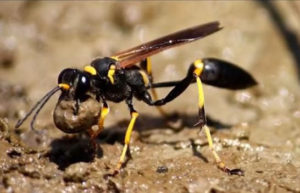
Can this wasp cause a plane to crash?
Can an insect cause a plane to crash?
When Israel Saka from Quora asked me whether an inset can cause a plane to crash, it reminds me of Birgenair Flight 301.
Yes, insects could indeed cause havoc if actions and precautions were not taken early enough.
On 6 February 1996, a Bergenair Boeing 757 flying from Puerto Plata in the Dominican Republic to Frankfurt crashed into the ocean about 5 minutes after take-off. Tragically, 189 people on board were killed.
The cause of the accident was due to incorrect airspeed information from one of the pitot tubes. Investigators believed that this airspeed sensing device was blocked by a wasp nest built inside it.
Prior to the flight, the aircraft had been sitting unused for 20 days at the airport without pitot tube covers.
Air speed is measured by pitot tubes in the aircraft. This tube system senses differences in static and dynamic pressure as the plane moves forward against the air flow. If the tube is blocked, it can cause airspeed errors leading to safety related issues.
Incidentally, this airspeed sensing tube was invented by French engineer Henri Pitot, hence the name Pitot tube.
During a take-off run, the co-pilot would announce ‘80 knots’ when his airspeed indicator approached this number. The captain must acknowledge.
In the incident, the Turkish captain, Ahmet Erdem, noted that his airspeed was malfunctioning but chose not to reject as required in the airline’s Standard Operating Procedures.
Nevertheless, the aircraft took off but because the pitot tube was blocked, it was showing erroneous readings causing the autopilot to trip.
This led to further malfunctions. It caused the crew to be confused because the captain’s airspeed indicator was way too high but the co-pilot’s indicator was correct. With contradictory readings given by the plane, the captain reduced the speed thinking it was flying too fast. As such, the captain mismanaged the flight controls and caused the plane to crash in an unusual position.
This tragedy happened about 25 years ago all because the wasp decided to build a nest in the pitot tube. For this reason, all pitot tubes have covers placed on them before departure to prevent such incident.
Lessons learned to reject a take-off with unreliable airspeed are sometimes forgotten.
On 30 August, 2018 the West Australian News reported a similar story when a Malaysian Airlines Airbus A330 flight from Brisbane to Kuala Lumpur continued to take off after the crew noticed faulty speed warning.
In this incident, eight personnel including the captain failed to notice that the pitot covers were not removed.
Fortunately, the crew were better trained on unreliable airspeed indications. They activated the back up speed system (BUSS) which provided a color-coded scale derived from GPS data and landed the plane safely.
This time, the malfunction was not caused by a wasp nest but by the failure to remove pitot tube covers!
See a video on How Did an Insect Bring Down This Plane here https://www.youtube.com/watch?v=8mIpA2tPmeU